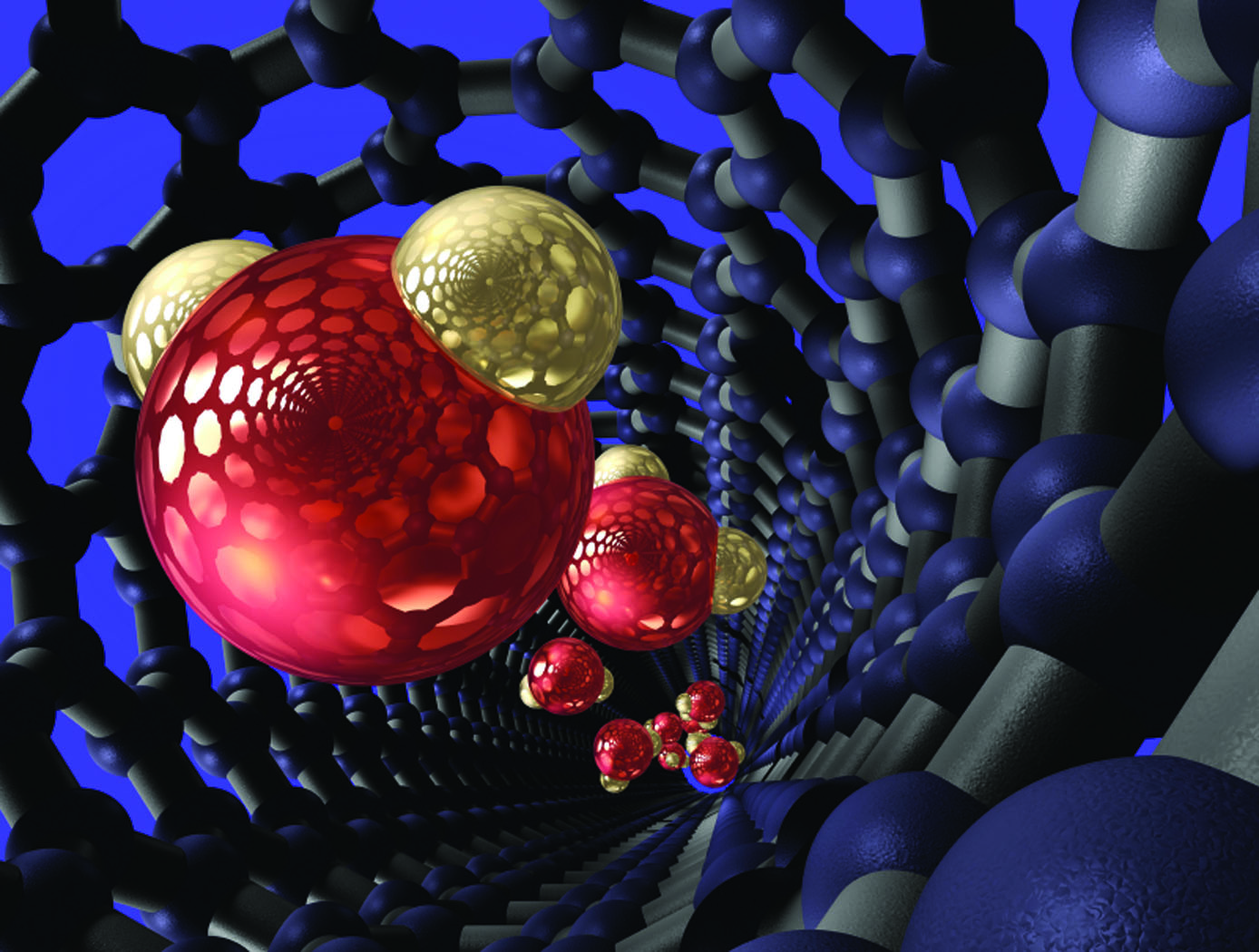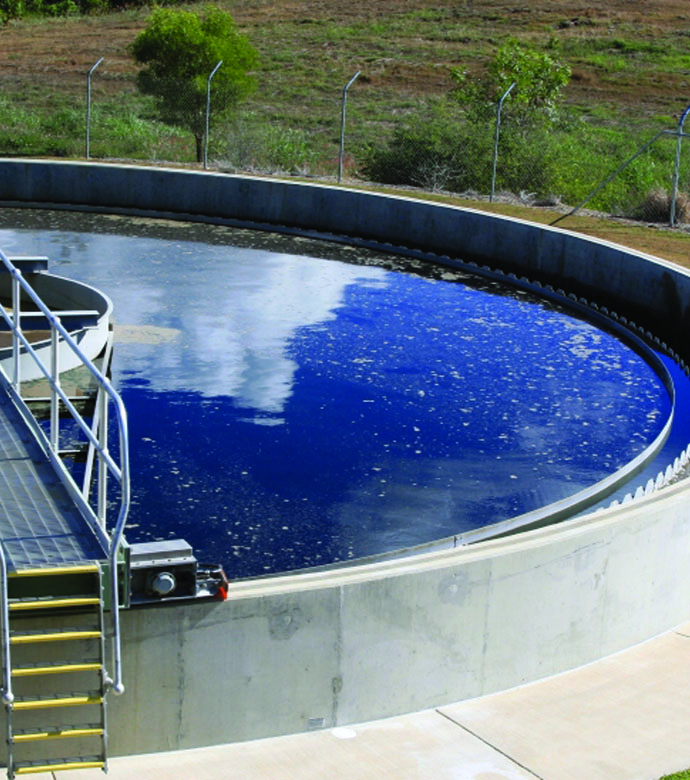Filtering Molecules with Nanotube Technology
health medicine and biotechnology
Filtering Molecules with Nanotube Technology (MSC-TOPS-29)
Conceived to eliminate contaminants from water or other molecules
Overview
Innovators at NASA's Johnson Space Center have identified a method to create a filtration device to eliminate contaminants from water supplies. Originally developed to purify wastewater for reuse aboard the International Space Station, the innovation is applicable to numerous situations on Earth where there is a need to collect potable, medical-grade water from a contaminated water supply. The unique aspect of the technology is its use of acoustics rather than pressure to drive water through small-diameter carbon nanotubes. The invention requires less power than conventional filtration systems and is well-suited to a variety of water processing needs.
This NASA patent is available for your company to license, mature the technology and develop into a commercial product. NASA does not manufacture products for commercial sale.
The Technology
This water filtration innovation is an acoustically driven molecular sieve embedded with small-diameter carbon nanotubes. First, water enters the device and contacts the filter matrix, which can be made of polymer, ceramic, or metallic compounds. Carbon nanotubes within the matrix allow only water molecules to pass through, leaving behind any larger molecules and contaminants. The unique aspect of the technology is its use of acoustics to help drive water through the filter.
An oscillator circuit attached to the filter matrix propagates acoustic vibration, further causing water molecules to de-bond and move through the filter. This use of acoustics also eliminates dependence on gravity (and thus filter orientation) to move water through the device. When water exiting the system diminishes to a pre-determined set point, a cleaning cycle is triggered to clear the sediment from the inlet of the filter, reestablishing the standard system flow rate. Unlike other filtration systems, flushing of the filter system is not required. The combination of acoustics and small-diameter carbon nanotubes in this innovation make it an effective and efficient means of producing contaminant-free, clean water.


Benefits
- Produces clean water by eliminating contaminants
- Requires less power than conventional filtration systems
- Does not depend on gravity for water to flow through the system
- Potentially scalable to a large bank of integrated filters
Applications
- Medical facilities
- Laboratories
- Distilleries
- Ultrapure Water Filtration: Semiconductor Fabrication Facility
- Desalination plants
- Wastewater treatment facilities
- Consumer markets
Similar Results

Microwave-Based Water Decontamination System
Bacterial contamination of water systems used in microgravity is a major issue for NASA because biofilms can clog or interfere with water system functions and bacterial ingestion can be harmful to astronaut health. To address this problem, NASA innovators developed a microwave based technology to purify contaminated water by eradicating and eliminating bacteria that grows in systems that generate potable water, in equipment utilizing cooling loops and heat exchangers, and removing bacterial contamination that is present on a variety of surfaces. This decontamination system is chemical free and requires minimal to no consumables.
Initial testing identified a specific microwave frequency band and exposure times for killing bacteria (Burkholderia cepacia) and biofilm. Test results show that exposing static water to microwave energy for 90 seconds can effectively kill waterborne bacteria and biofilm within a water filtration system. Additional testing, using a circulating water test bed, demonstrated that microwave energy at the selected frequency can effectively eradicate waterborne bacteria within 30 seconds. This technology could be further developed into a portable, lightweight system for use in remote locations as well as commercial space applications. The microwave decontamination system could also be added to existing water systems to extend the life of the system.

Wastewater Treatment and Remediation
NASA's system was developed for smaller-scale, space-based applications. However, the technology is scalable for larger industrial and municipal water treatment applications. Implementation of the Ammonia Recovery System could significantly reduce nitrogen content from water treatment processes, meaningfully improving the quality of water. This system offers a novel way to reduce nitrogen water pollutants, while allowing for the nitrogen to be collected and reused- reducing environmental and public health risks and providing an environmentally friendly fertilizer option. NASAs environmental solutions work to sustain life on earth through space based technology
The adaptable nature of this system gives it potentially broad applications in a wide variety of industries; it is particularly ideal for on-site remediation of wastewater in places like condo complexes, hotels and water parks. Current methods of ammonia recovery could not meet NASAs mission requirements, so a new process was devised to optimize for high ammonia selectivity, simplicity, low volume , low power usage and zero contaminants in the effluent. To do this, NASA designed a novel regenerable struvite-formation system for the capture of ammonia. This system has three primary functions:
1) Removal of ammonia from wastewater using a media that is highly selective for ammonia
2) Capture of the ammonia for later use (e.g., as a fertilizer)
3) Regeneration of the capture media for reuse in the system

Contaminated Water Treatment
This invention is a system and associated method that is a two step process. It provides a contaminant treatment pouch, referred to as a urine cell or contaminant cell that converts urine or another liquid containing contaminants into a fortified drink, engineered to meet human hydration, electrolyte and caloric requirements. It uses a variant of forward osmosis (FO) to draw water from a urine container into the concentrated fortified drink as part of a recycling stage. An activated carbon pretreatment removes most organic molecules. Salinity of the initial liquid mix (urine plus other) is synergistically used to enhance the precipitation of organic molecules so that activated carbon can remove most of the organics. A functional osmotic bag is then used to remove inorganic contaminants. If a contaminant is processed for which the saline content is different than optimal for precipitating organic molecules, the saline content of the liquid should be adjusted toward the optimal value for that contaminant.

Multi-Stage Filtration System
While HEPA filter elements can last for years without intervention, pre-filtering systems that remove larger particles before they reach the HEPA filter need to be treated (most often by cleaning or replacement) as often as once a week. These treatments can be resource-intensive and expensive, especially in extreme environments. Glenn's innovative system combines a pre-filtration impactor and a scroll filter that reduces the need to replace the more sensitive or expensive filters, extending the system's working life. The system uses an endless belt system to provide the impaction surface. A thin layer of low-toxicity grease is applied to the impaction surface to increase particle adhesion. A high flow turning angle near the impaction surface causes relatively large particles to impact and stick to the surface while smaller particles stay within the air flow. When the surface is covered with particles - or if a layer of particles has grown to a thickness that impairs adhesion - the surface is regenerated. The band is rotated so that the loaded surface passes by a scrapper, removing the layer of particles and a clean segment of the band revolves to become the new impaction surface.
A further innovation is the scroll filter which allows the filtration media to be rotated out of the airflow when fully loaded, providing multiple changes of the filter through a motorized scrolling or indexing mechanism. When nearly fully loaded with dust particles, the exposed media is mechanically rolled up on one side of the filter to both contain and compactly store the dust. The spools that hold the clean and spent filter media are mounted on roller bearings to facilitate the scrolling operation and reduce motor power requirements. Nearly any grade of filter media can be used to meet the desired filtration specification. Additional media rolls can be added after the original roll is spent to further increase filter life.

Debris-Tolerant Valve
NASA's Debris-Tolerant Valve is designed for use in machines/environments with a large quantity of airborne dust or other contaminants. Valves subjected to airborne contaminants tend to have limited lifetime due to damaged seals, bearings, and other internal components. The Debris-Tolerant Valve design addresses this problem with four core improvements over existing commercial valves that are typically used in dusty or debris-laden processes: (1) a new cylinder design that substantially decreases dust collection within the valve; (2) a rotational valve design that minimizes grinding and packing experienced by the standard ball valve; (3) the use of elastomeric seals rather than the Teflon-based seals used in existing valves which are prone to scratching and subsequent leakage; and (4) a bleed port for fluid intake that allows pressure to build slowly in the valve and eliminates the stirring of dust commonly caused by rapid inflow of air in existing valves.
The operational lifetime of NASA's Debris-Tolerant Valve exceeds the lifetime of a standard commercial valve and the existing selector valve used on the ISS by 12X and 6X, respectively. NASA's valve design has fewer parts than existing valves and could be disassembled without tools, enabling easier servicing and maintenance. The Debris-Tolerant Valve is only about one-seventh (1/7) the cost of the existing ISS selector valve.



